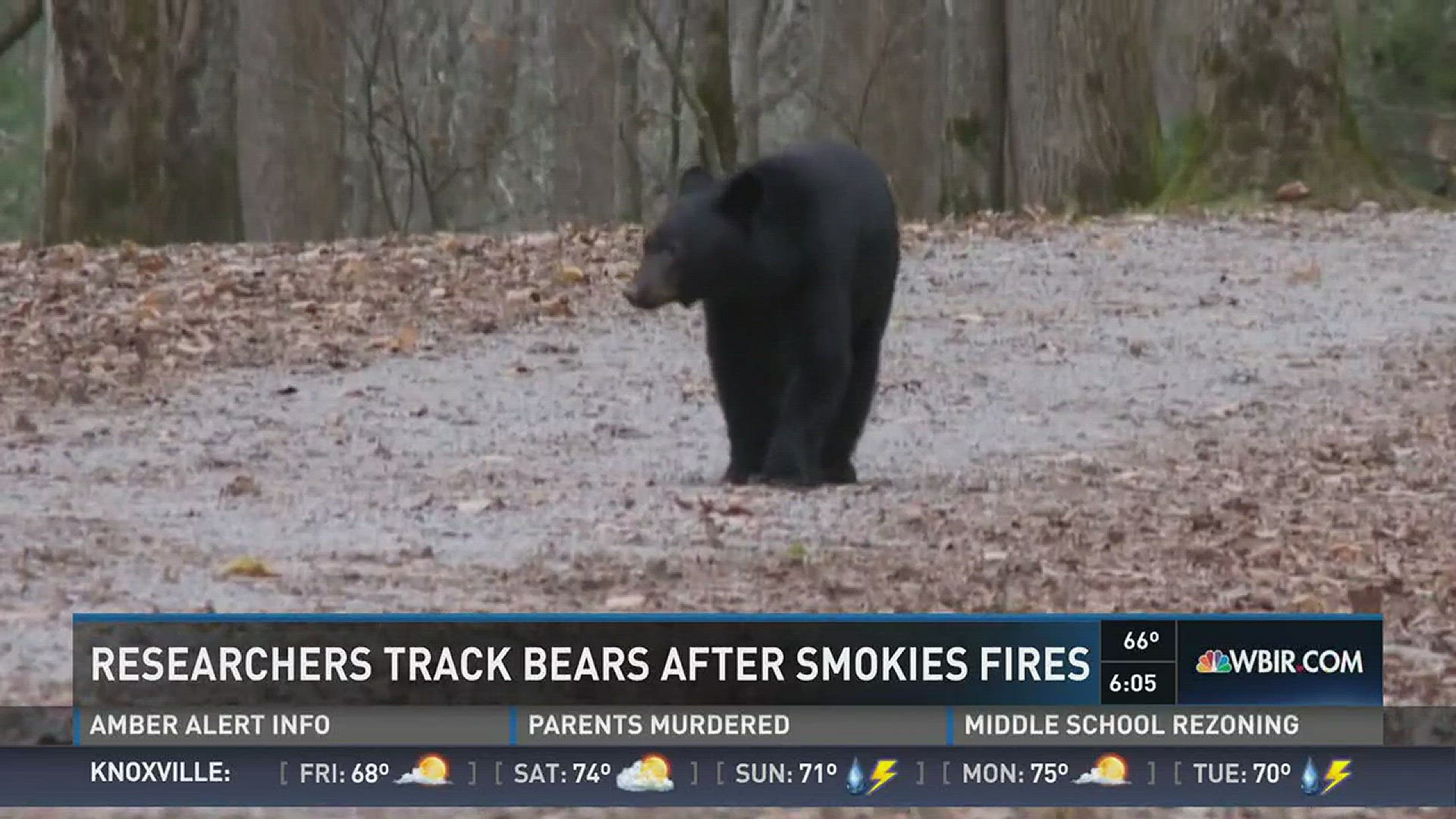Graduate students at the University of Tennessee have been tracking black bears with GPS collars since 2015. Their studies navigated in a new direction following November's devastating wildfires in the Great Smoky Mountains National Park and Sevier County.
"We had already been tracking the bears, so this fire presented a unique opportunity to look at these bears and how they were moving in response to fires. We've only found two other studies where they really have that sort of data on how bears have responded to fire," said Jessica Giacomini, one of the two graduate students working on the project.
"There's a lot of interest in how those collared bears did. Did they make it? Did they just completely leave the area to try to avoid the fire?" she said.
While the fire killed at least two bears in the park, all the animals being tracked by Giacomini and her research partner, Coy Blair, survived the fire.
The two teamed up after the fire because each has tracked different types of bears in the national park. One focuses primarily on problem bears that have been relocated, while the other has tracked cubs reintroduced to the wild through the Appalachian Bear Rescue.
"This was a situation where we have data on their movements before, during and after the fire. What we really found is the fire did not affect them that much at all. The bears fared pretty well," said Blair, who also works as a curator at Appalachian Bear Rescue. "We did have bears that we found denning right in the fire perimeter, where it's just what we call 'the black.' There is not much there but ash and just whatever didn't burn. The lack of movement could be due to many different factors, but it was the time of year when many animals are slowing down and starting to den for the winter."

"We didn't see a mass exodus of bears out of the fire area. Most of them, it looked like they kind of just hunkered down and waited it out. And that could be because it was a short event with the fire only lasting a couple of days," said Giacomini.
The researchers said they will be interested in the effects of the fire on bears as they become more active and search for food. For example, it is unknown if the areas charred by the fire will produce more soft mast food for the bears due to the added nutrients in the soil. Likewise, the fire could also reduce the amount of food in some areas.
Giacomini and Blair presented their early findings at a colloquium in Gatlinburg Thursday. The all-day event gave scientists from across the country a chance to share information on their research on wildlife in the Great Smoky Mountains and Big South Fork.
The event was hosted by Discover Life In America (DLIA) and included topics ranging from hemlock trees, bats, invasive frogs and wild hogs. While it is too soon for most research to have firm data on the impact of the wildfires, leaders at DLIA say their work in the previous decades will give scientists a clear view of life before the fires.
"Establishing baseline data is so important," said Todd Witcher, executive director of DLIA. "All of this research gives us a clear representation of the wildlife and habitat in the Great Smoky Mountains. When we have a catastrophic event, it means we have the data to do a clear analysis of what has changed and how an event impacts various species. I think you will see a lot more studies on the impact of the wildfire in the next couple of years."

